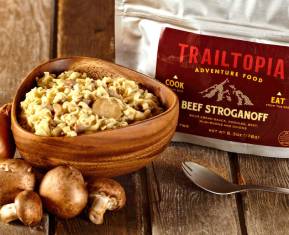Packing for a canoe camping trip is a balancing act between bringing along all of the necessities and keeping your load light and easy to handle. While paddling through serene lakes or winding rivers, you will not want to be weighed down by bulky gear.
Therefore, it is important to pack smartly, making the most of less space while ensuring comfort and enjoyment during your trip.
The most important thing while packing for a canoe camping trip is choosing lightweight and compact gear.
With modern outdoor gear designed for space efficiency, choosing multi-functional items can save a lot of space. Consider compact cookware that nests together, collapsible water bottles, and lightweight sleeping pads that roll up tightly. When packing clothes, pay particular attention to moisture-wicking and quick-drying materials so you don’t have to switch your outfits frequently.
It's not just what you pack,  it's how you pack. Learn to pack your gear in such a way that it allows for good space and has a balanced weight.
it's how you pack. Learn to pack your gear in such a way that it allows for good space and has a balanced weight.
First, lay everything you plan to bring out in front of you and consider whether you need it. Now it’s time to be brutal; if it doesn't serve a purpose or can't be used for multiple purposes, leave it at home. Once you've reduced your gear, pack items in a logical order.
Heavier items should be placed at the bottom of your pack to help keep a low center of gravity. This makes the load easier and more stable to carry, especially over uneven terrain or when getting in and out of the canoe.
Maximize space inside waterproof dry bags by compressing your clothes and sleeping gear, squeezing out extra air for a more compact package. These bags not only save space but also keep your belongings dry in case of spills or rain.
When you're short on space,  it's important to prioritize what you carry. Start with the essentials: shelter, sleeping gear, food, and clothing.
it's important to prioritize what you carry. Start with the essentials: shelter, sleeping gear, food, and clothing.
For shelter, a lightweight tent or tarp works great, and if the weather's nice, a hammock can be a cool, space-saving option. You may need to rely on the functionality and rain fly of a tent. While this may be the bulkiest and heaviest piece of gear, weather conditions and the presence of bugs might require a tent.
Your sleep gear should include a compact, weather-appropriate sleeping bag and a small, rollable and inflatable, or foldable sleeping pad.
For meals, stick to light, space-efficient foods like freeze-dried or dehydrated meals. With some careful meal planning, one small camp stove and a single pot will do the trick.
For clothing, choose versatile, layered options that can be mixed and matched rather than packing individual outfits for each day.
Make the most of every bit of space in your pack. Stash small items like utensils, headlamps, or first-aid kits inside pots or other larger gear. Roll your clothes tightly and use any remaining openings for whatever's left. This way, you can fully utilize your pack’s capacity without overloading it.
Effective packing for your camping trip lets you enjoy the adventure as you paddle down winding rivers or serene lakes, free from the burden of extra gear. With the right planning and approach, canoe camping can be both efficient and memorable.
Remember, don’t bring it if you don’t need it, because you have to carry it over every portage. Also, if you need it, don’t leave it behind, because once you are in the wilderness, you can’t just go back and retrieve it.